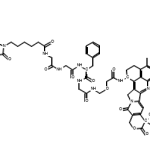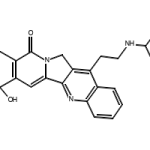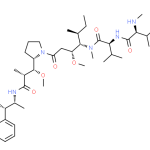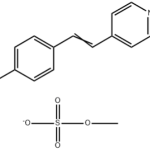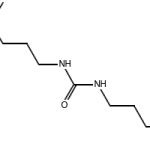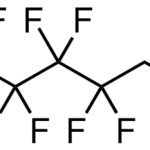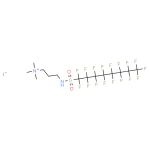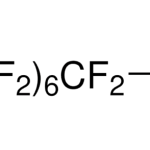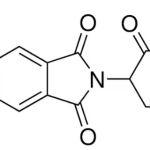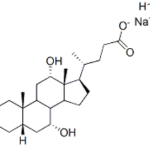
Identification
CAS Number
9031-11-2
Enzyme Number
3.2.1.23
Name
Lactose
Synonyms
1243583-85-8 [RN]
2-[2-(4-Heptylphenyl)ethyl]-6-hydroxybenzoesäure [German] [ACD/IUPAC Name]
2-[2-(4-Heptylphenyl)ethyl]-6-hydroxybenzoic acid [ACD/IUPAC Name]
Acide 2-[2-(4-heptylphényl)éthyl]-6-hydroxybenzoïque [French] [ACD/IUPAC Name]
Benzoic acid, 2-[2-(4-heptylphenyl)ethyl]-6-hydroxy- [ACD/Index Name]
mg149
2-(4-heptylphenethyl)-6-hydroxybenzoic acid
2-[2-(4-heptylphenyl)ethyl]-6-hydroxy-benzoic acid
9031-11-2 [RN]
http:////www.amadischem.com/proen/484601/
MFCD22123243
MG 149
MG-149
α-galactosidase
SMILES
CCCCCCCc1ccc(cc1)CCc2cccc(c2C(=O)O)O
StdInChI
InChI=1S/C22H28O3/c1-2-3-4-5-6-8-17-11-13-18(14-12-17)15-16-19-9-7-10-20(23)21(19)22(24)25/h7,9-14,23H,2-6,8,15-16H2,1H3,(H,24,25)
StdInChIKey
WBHQYBZRTAEHRR-UHFFFAOYSA-N
Molecular Formula
C22H28O3
Molecular Weight
340.456
EINECS
232-864-1
MDL Number
MFCD00130623
Properties
Appearance
White amorphous powder
Specific Activity
≥400U/mg
Purity (Sds-Page)
≥80%
Density
1.1-1.2 g/cm3
pH
6.0-7.5
Safety Data
RIDADR
NONH for all modes of transport
WGK Germany
3
Specifications and Other Information of Our Lactose CAS 9031-11-2
| Items | Natural Lactase | Acid Lactase |
| Description | Lactose is a special disaccharide found in mammalian milk. It is a sweetened sugar. Due to its low solubility in water, it cannot be directly absorbed by the human intestinal lumen. Neutral lactase (EC3.2.1.23) is a food-grade glycoside hydrolase fermented by Kluyveromyces lactis, a highly specific β-galactosidase that hydrolyzes lactose to form glucose and galactose , the solubility of these two monosaccharides is 3-4 times that of lactose, and their absorption rate in the intestinal lumen is the fastest among monosaccharides. Lactase can effectively solve the phenomenon of “lactose intolerance”, adding this enzyme can improve the taste and sweetness of milk, 3 times higher than unhydrolyzed milk, and improve the nutritional value of milk, especially for the weak and infants. | Acid Lactase can hydrolyze lactose to produce glucose and galactose, effectively solve the phenomenon of “lactose intolerance” and improve the sweetness of dairy products. |
| Advantages | 1.Natural and safe : Fermented from natural raw materials, it is derived from the protein with catalytic function in the living body, and has the characteristics of natural, safe and high-efficiency ; 2.Clean label : Lactase is a kind of natural ingredients for clean label that can reduce the dosage of sugar ; | 1.Natural and safe:Fermented from natural raw materials, it is derived from the protein with catalytic function in the living body, and has natural, safe and efficient characteristics. 2.High activity : derived from Aspergillus oryzae, it has very high activity under low pH conditions (pH3.0~5.5). It is suitable for digesting lactose in acidic environment. It can be used as a digestive aid in dietary supplements to effectively solve the problem of “lactose Tolerance phenomenon. |
| Effect | 1.It is used in liquid milk processing to increase the sweetness of milk, improve the taste, increase the nutritional value of milk, and avoid lactose intolerance ; 2. It is used in ice cream, concentrated milk and evaporated milk to solve the problem of lactose crystal precipitation, increase the stability of milk protein, and make the product taste more delicate ; 3. Application in the fermentation industry to increase the decomposition rate of lactose during the fermentation process and reduce the fermentation time ; | |
| Dosage | Generally, the recommended dosage is 300ppm-1000ppm, depending on the actual production ; | The dose of lactase per oral administration depends on the amount of lactose in the diet at each meal. Generally speaking, the consumption of 10 to 13 grams of lactose requires supplementation of 2,500 ALU lactase. We recommend supplementing 4,000 to 6,000 ALU lactase in a lactose-containing diet. |
| Application | Suitable for all kinds of dairy products, including fresh milk, UHT dairy products (ultra-high temperature sterilized milk), yogurt drinks, cream, ice cream, yogurt, etc. | Acid lactase is used in milk powder, lactase supplements, etc. |
| Precautions | Once opened, please use it up as soon as possible or vacuum seal again under refrigerated conditions ; When configuring the enzyme solution, it is necessary to ensure that the solution is fully dissolved, and use up the prepared enzyme solution as soon as possible, and it is best to use it currently. | Once opened, please use it up as soon as possible or vacuum seal again under refrigerated conditions ; When configuring the enzyme solution, it is necessary to ensure that the solution is fully dissolved, and use up the prepared enzyme solution as soon as possible, and it is best to use it currently. |
| Storage | Storage temperature:0-25℃; store in a dry environment and avoid direct sunlight ; the packaging must be kept intact or placed in a closed container while storing. | Storage temperature : 0-25℃; store in a dry environment and avoid direct sunlight ; the packaging must be kept intact or placed in a closed container while storing. |
| Shelf Life | 12 months | 12 months |
| More specifications | ||
| Appearance | Colorless to brown liquid | White to light yellow powder |
| Neutral Lactase Activity | ≥7500ALU/g | ≥200000ALU/g |
| Lead(Pb) | ≤5ppm | ≤5 mg/kg |
| Total Arsenic(calculated as As) | ≤3ppm | ≤3 mg/kg |
| Hg | <0.5 ppm | |
| Cadmium | <0.5 ppm | |
| Coliform | <1CFU/mL | ≤30 CFU/g |
| Escherichia Coli | Absent | |
| Salmonella (25mL) | Absent | |
| Staphylococcus Aureus(25mL) | Absent | |
| Moisture | / | ≤8.0% |
| Fineness (pass rate of 40 mesh standard sieve) | / | ≥80% |
| Escherichia coli (MPN/g) | / | ≤3.0 MPN/g |
| Salmonella (25g) | / | Absent |
Storage
Store -20°C for long time, sealed and away from light.
Links
This product is developed by our R&D company Ulcho Biochemical Ltd (http://www.ulcho.com/).
Quick Inquiry
Fill out our inquiry form and one of our experts will be in touch with you shortly.

